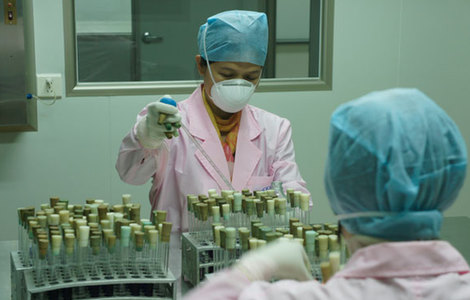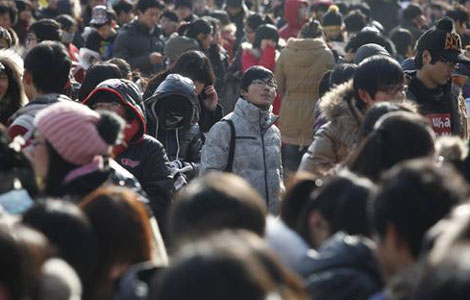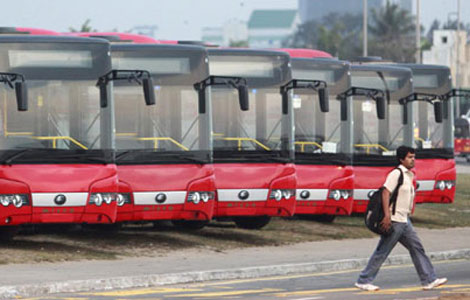Tap water in Liuzhou safe for drinking
Updated: 2012-02-02 07:57
By Wang Qian and Huang Feifei (China Daily)
|
|||||||||
Although authorities claimed they had taken steps to ensure water safety following a similar toxic spill in a South China river early in January, many users decided to shut off their taps.
"We will be using bottled water for drinking and cooking for about a month," said Xiao Deguan, a 61-year-old resident of Liuzhou city, on Wednesday.
Xiao sent her 1-year-old granddaughter to her relatives in Nanning, capital of Guangxi, after she heard about the spill.
Experts with the task force estimated about 20 metric tons of cadmium had been discharged into the Longjiang River on Jan 15 causing a cadmium content in the water 80 times higher than the safe limit, Xinhua News Agency reported.
The level dropped to 25 times the limit on Monday after thousands of tons of aluminum chloride and caustic soda were poured into the river and dams upriver increased the volume of discharges.
Some businesses have been hit by the pollution threat. A fish seller surnamed Wei in Huangcun market, Liuzhou, said she sold nothing on Wednesday because customers believed the fish were poisoned.
Those suspected of causing the pollution include heads of six metal companies and a zinc copper mine in Hechi, one of the country's leading mineral producers.
In 2005, two of China's largest zinc smelters were shut down temporarily after cadmium contaminated the Pearl River Delta and the Xiangjiang River, sources of drinking water for Hunan and Guangdong provinces.
In 2009, more than 500 villagers fell sick and two died after being exposed to cadmium that was illegally dumped into the Liuyang River by the Xianghe Chemical Plant in Liuyang, Central China's Hunan province.
Minister of Environmental Protection Zhou Shengxian said that in the first eight months of last year, there were 11 accidents involving heavy metal pollution.
In early 2011, China issued the 12th Five-Year Plan (2011-2015) on heavy metal pollution prevention and control, involving arsenic, lead, mercury, chromium and cadmium.
China Daily
Hot Topics
Kim Jong-il, Mengniu, train crash probe, Vaclav Havel, New Year, coast guard death, Internet security, Mekong River, Strait of Hormuz, economic work conference
Editor's Picks

|

|

|

|

|

|







